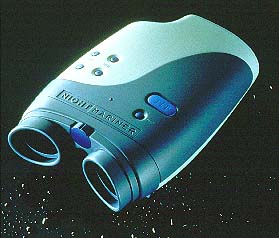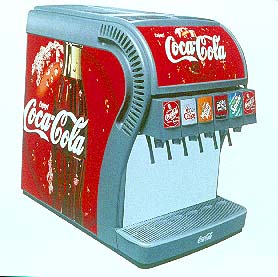

July Issue 2001
Mint Museum of Craft + Design in Charlotte, NC, Features Exhibition on Design
From the morning alarm to clicking off David Letterman's video antics via remote control, the work of industrial designers impacts the way you work, play and even express yourself throughout the day. From cell phones to lap tops, den recliner to office work station, the style of your eye shades to the line of the sedan in the drive, industrial designers merge function, safety, comfort, technology and style in giving massed-produced objects their individual characteristics and consumer appeal.
The creative process of the ID is the subject of Design at Work: The Process Behind Products at Charlotte, NC's Mint Museum of Craft + Design, July 7 through Oct. 7, 2001. The exhibition is organized by MMCD curator Mary Douglas and will feature the work of four Charlotte-based design firms Axiom, BOLT, Design/Joe Sonderman, Inc. and Tolleson/Design.
Furniture, industrial and consumer products will be illustrated from start to finish in stages of design development and production. Concept sketches, CAD renderings, engineer drawings, research, models, prototypes, advertising and other collateral materials will accompany the finished products. The exhibition itself will serve as a design example as Design/Joe Sonderman will be creating the presentation and making the process of its development visible within the show itself.
Design at Work also presents displays on related topics beginning with "What is Industrial Design?" The design process is charted to indicate underlying constants in all projects. Behind each product is a team that includes business executives, market researchers, industrial designers, engineers and manufacturers. Human factors are represented by ergonomics, psychology (perception) and anthropometrics (science of measuring the human body). Teams are correlated to a production schedule that illustrates each member's involvement in the design process.
Specific materials and processes will be illustrated, such as the mold making properties of plastics in prototyping technologies. With an emphasis on function, process and material, Design at Work underscores the relationship of craft and design. Industrial Design historically functioned as an extension of the craftsman and tradesman. Today design is more concerned with looks. Styling is often the primary agent of change as evident by automotive design.
Design at Work showcases professional activity in the Carolinas region.
Featured projects include:
 Night Mariner
Binocular, BOLT Design
Night Mariner
Binocular, BOLT Design
A work carrel designed by BOLT for Herman Miller that functions as a self-contained "furniture environment" in a corporate call center. To compensate for the worker's lack of floor space, BOLT emphasized creature comforts with personalized HVAC system, lighting and sound controls. Collapsing hood and windows provide flexibility in privacy and viewing. The work carrel has the feel of a cockpit, where there is a place for everything and everything in its place. Other BOLT designs include the Night Mariner night vision binocular for ITT Defense, "Respose" biopsy forceps for GI Supply, Kobalt mechanical tools for Lowe's and the "Thoughtcaster" Attention Training System manufactured by East 3.
Tolleson's Speedway office desk system for Tellus, comprised of desktop, files and hutch, presents an all-inclusive solution that can accommodate a production worker or top executive. The product is designed for reconfiguring into "teaming environments" for interdepartmental meetings/work. Other Tolleson designs include the Elicit seating line for Harter, the Wrought Iron Café set for Woodard and airport seating for Chromcraft.
 Olympus Foutnain
Drink Dispenser, Axiom Design
Olympus Foutnain
Drink Dispenser, Axiom Design
Axiom's designs include a warehouse inventory scanner for Compsee, a nurse location device for Hill-Rom and a drug discovery device for Xanthon. These products reflect the firm's industrial focus and its specialty in prototyping technology.
Design/Joe Sonderman, Inc. has expanded the bounds of traditional industrial design practices to include exhibit design, packaging design, environmental design and corporate identity. Projects include the resorts of Kiawah Island and Wintergreen, Lowe's Motor Speedway, Charlotte's Discovery Place Science Museum, Atlanta's SciTrek, the Universities of North Carolina and Virginia, municipalities of Charlotte and Raleigh and industrial clientele Bowater and IBM.
"In an age of specialization, the industrial designer remains a renaissance figure combining knowledge about technology and the visual arts with knowledge about people," stated Mary Douglas. A thorough understanding of physical science, engineering principles, ergonomics, aesthetics and industrial materials and processes are combined with psychology, sociology and the communication arts in forming a manufactured product, shaping it to fit the people who use it and the industrial process that produce it.
For further information check our NC Institutional
Gallery listings or call the Museum at 704/337-2000 or on the
web at (http://www.mintmuseum.org).
Mailing Address: Carolina Arts, P.O. Drawer
427, Bonneau, SC 29431
Telephone, Answering Machine and FAX: 843/825-3408
E-Mail: carolinart@aol.com
Subscriptions are available for $18 a year.
Carolina Arts
is published monthly by Shoestring
Publishing Company, a subsidiary of PSMG, Inc.
Copyright© 2001 by PSMG, Inc., which published Charleston
Arts from July 1987 - Dec. 1994 and South Carolina Arts
from Jan. 1995 - Dec. 1996. It also publishes Carolina Arts
Online, Copyright© 2001 by PSMG, Inc. All rights reserved
by PSMG, Inc. or by the authors of articles. Reproduction or use
without written permission is strictly prohibited. Carolina
Arts is available throughout North & South Carolina.